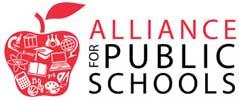In today’s interconnected world, social media has become an integral part of our lives. For school-age students and teachers alike, navigating this digital landscape presents both opportunities and challenges. Over 35 states have passed laws or adopted resolutions around the use of social media by children as concerns grow for its impact on their mental health, well-being, and safety.
However, for students, social media is more than just a platform—it’s a vital connection to their peers. It’s where friendships blossom and inside jokes thrive. But- it comes with hidden pitfalls. The pressure to fit in, the fear of missing out, and the constant comparison—all contribute to emotional highs and lows. The drama around who’s in and who’s out spills over from online to the classroom, affecting self-esteem and mental well-being.
Students need guidance on managing this digital world. Educators and families play a crucial role here. Encouraging open conversations about social media, teaching critical thinking skills, and emphasizing self-regulation are essential. Students must learn to be responsible digital citizens.
Social Media and School
Educators are on the front lines of navigating this new digital world. Teachers grapple with dual roles: educating young minds and keeping them safe. They use technology to disseminate information, engage students, and foster creativity but it can also lead to bullying, cyber drama, and distractions.
At its best, social media can be a tool for expression, collaboration, and global awareness. Teachers must do what they do best– educate students about ways to use social media and technology wisely. They can engage students in honest conversations about social media’s impact and develop rules and consequences together, fostering ownership. Families must be part of this dialogue in order for it to be truly effective. Equipping students with empathy, resilience, and digital literacy will be the key to keeping students safe.
In the digital age, social media isn’t going away. As caring adults, we must guide students toward responsible usage. Let’s create a safe space where emotional wellness and mental health thrive alongside digital connectivity.
This blog post is for informational purposes only and does not constitute professional advice. Consult a mental health professional for personalized guidance.
Sign up for our updates to stay informed of issues impacting our children, educators, and public schools.








